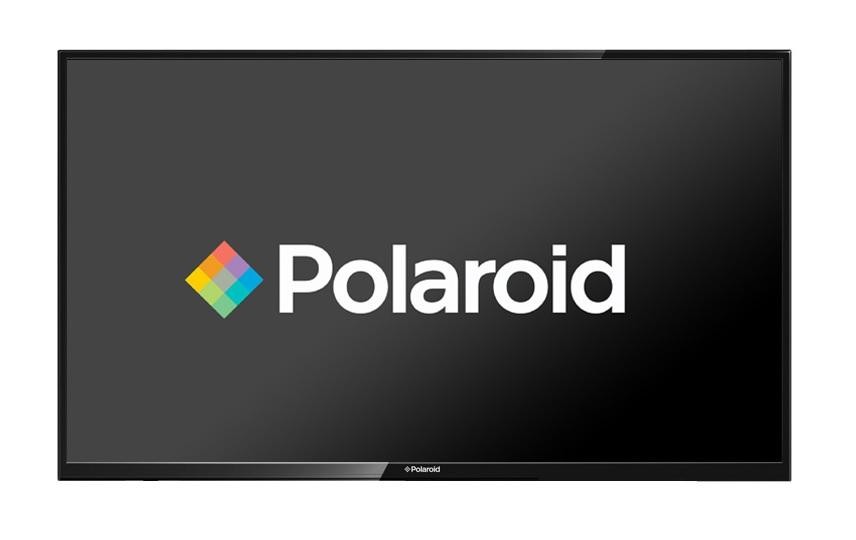

The direction of the audio is tricky when the visuals need to be front and centre, and while other TV brands have figured out some workarounds – such as the TV stand on the LG C Series, which funnels downward-firing audio towards the viewer – Sony definitely has a unique solution.Ģ021's Sony A90J OLED is a return to form, given we didn't have a comparable 4K OLED flagship the year before, with boosted brightness and a slick Google TV interface putting it at the front of the pack for 2021 OLED screens.Īngling after a Panasonic TV? While this Japanese brand doesn’t sell commercial sets in the North America – or Australia these days – its incredible HZ2000 TV is used as a monitor for professional Hollywood colorists, given its high-contrast output and custom OLED panel.
#POLAROID TV WARRANTY DRIVERS#
High-end sets feature Sony’s proprietary Acoustic Surface Audio+, which uses strategically placed drivers to emit sound from the TV panel itself, rather than through downward, rear, or upward-firing speakers. Possibly to be expected from a brand so involved with music – through, you know, Sony Music – these sets really deliver on audio technology. Sony makes some truly breathtaking TVs, with sets like the A9G OLED delivering incredible picture quality with stunning design to match. There's also now another OLED TV, the Hisense A9G, which offers a cheap and capable screen above what its predecessor (the O8B OLED) was capable of. Processing issues aren’t uncommon with Hisense sets that don’t quite have the power to maintain smooth images, or the dedicated dimming zones to prevent light blooming – and whether you go with a Hisense TV will depend on how important those visual artefacts are. Some half-baked features in Hisense's Vidaa U smart TV platform, too, show what happens when you cut corners while trying to create a premium experience.īut there’s no denying the sheer value of many Hisense TVs, while the brand has also branched out with some television designs that really push the envelope – like the ultra-thin Sonic One or the Tri-Color Laser TV / projector hybrid. The budget TV brand offers premium technologies like 4K and HDR for a decent cut below what you’d usually pay, making the TV displays of tomorrow far more accessible for hordes of people. Hisense is a name you’ll be hearing a lot if you’re after a bargain TV.

LG doesn’t support HDR10+ like Samsung or Panasonic, but you’ll find plenty of Dolby Vision and Dolby Atmos support across the best LG TVs.

LG sets also tend to have a bit more ‘pop’ to the colors, compared to the restrained tone mapping of sets sold by Panasonic. Why go with an LG OLED? You'll be getting brilliantly vivid colors, sharp contrast, gorgeously deep blacks, and LG’s leading webOS smart platform tying the whole experience together. The latest LG C1 OLED is now our top OLED pick, as well as second place in our guide to the best TVs of 2021 overall. The LG CX OLED topped our best OLED TVs guide for a while until the company's 2021 range added a new 83-inch size and 42-inch models to go with it, allowing for a wider variety of budgets, sizes and consumer needs. The manufacturer makes OLED panels for both itself and competitors, and has enabled the resurgence in OLED years after interest in the technology was waning.ĭoes that mean LG makes the best OLEDs? Possibly. If your eye’s been caught by an OLED television, you can thank LG. However, you will find it installed in the best Samsung TVs to allow for voice recognition and navigation of Samsung’s Tizen interface. It isn’t particularly widely used beyond a handful of Samsung devices, unlike Amazon’s Alexa AI or Google Assistant, given Bixby’s less capabilities. Samsung is also the only TV manufacturer to have their own, in-house voice assistant, Bixby. Samsung is also pushing the adoption of 8K TVs, ensuring its flagship QLED each year uses the ultra-ultra-high resolution, even if the average shopper probably won’t have anything more than 4K in their sights for now. While OLED TVs offer stiff competition, breakthroughs like Samsung’s Ultra Viewing Angle technology – and more forgiving pricing – are helping it keep the edge, while plans for QD-OLED hybrids could see Samsung cement its dominance further. Unlike some of its competitors, too, Samsung doesn’t make the jump to OLED for its high-end sets, sticking with quantum dot LED (or ‘ QLED’) panels in its premium, high-contrast displays – with thousands of nits brightness making for dazzling output. Samsung is also a big backer of LED/LCD TVs, with a wide range of mid-price 4K TVs that sees new models every year. The South Korean electronics manufacturer has a large user base for a reason – it offers a wide range of sets at a variety of price points, with a base level of quality above more budget brands.


 0 kommentar(er)
0 kommentar(er)
